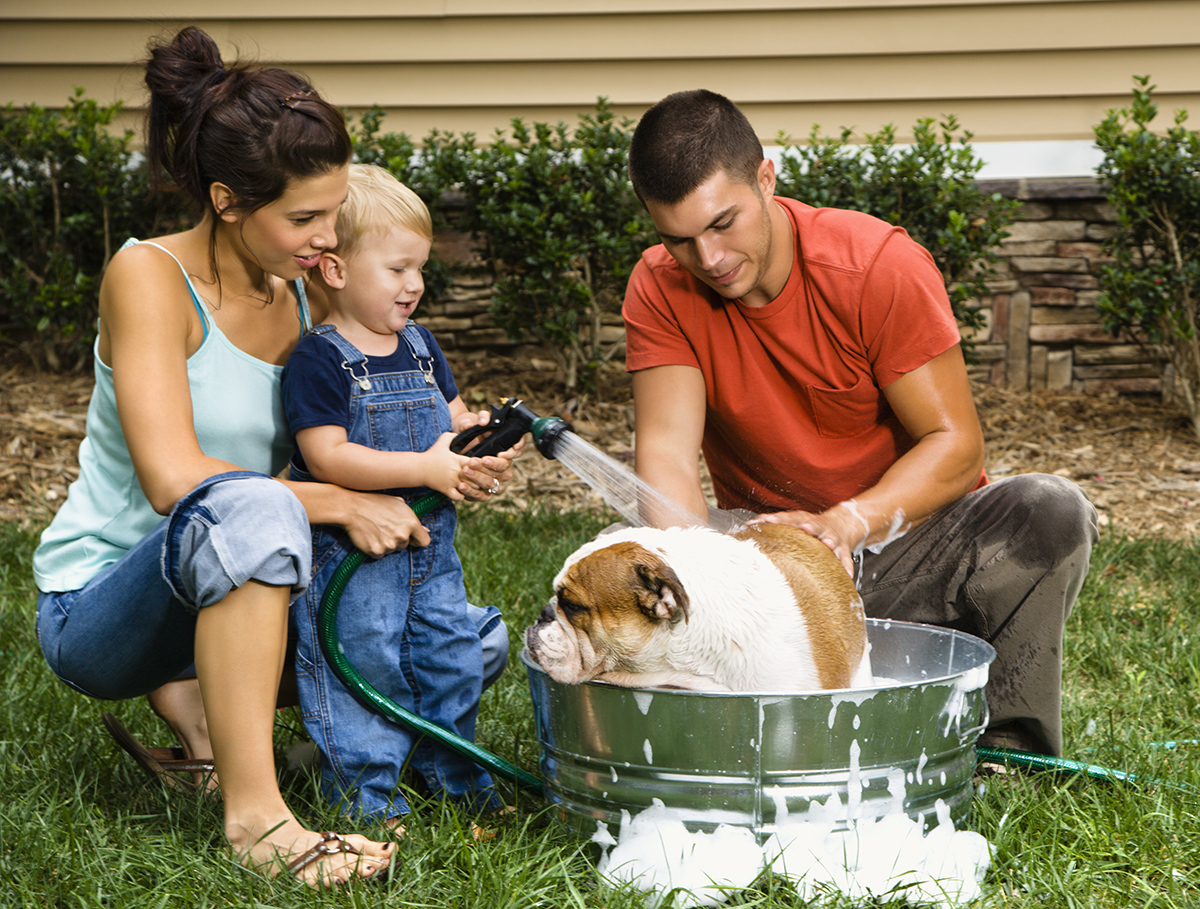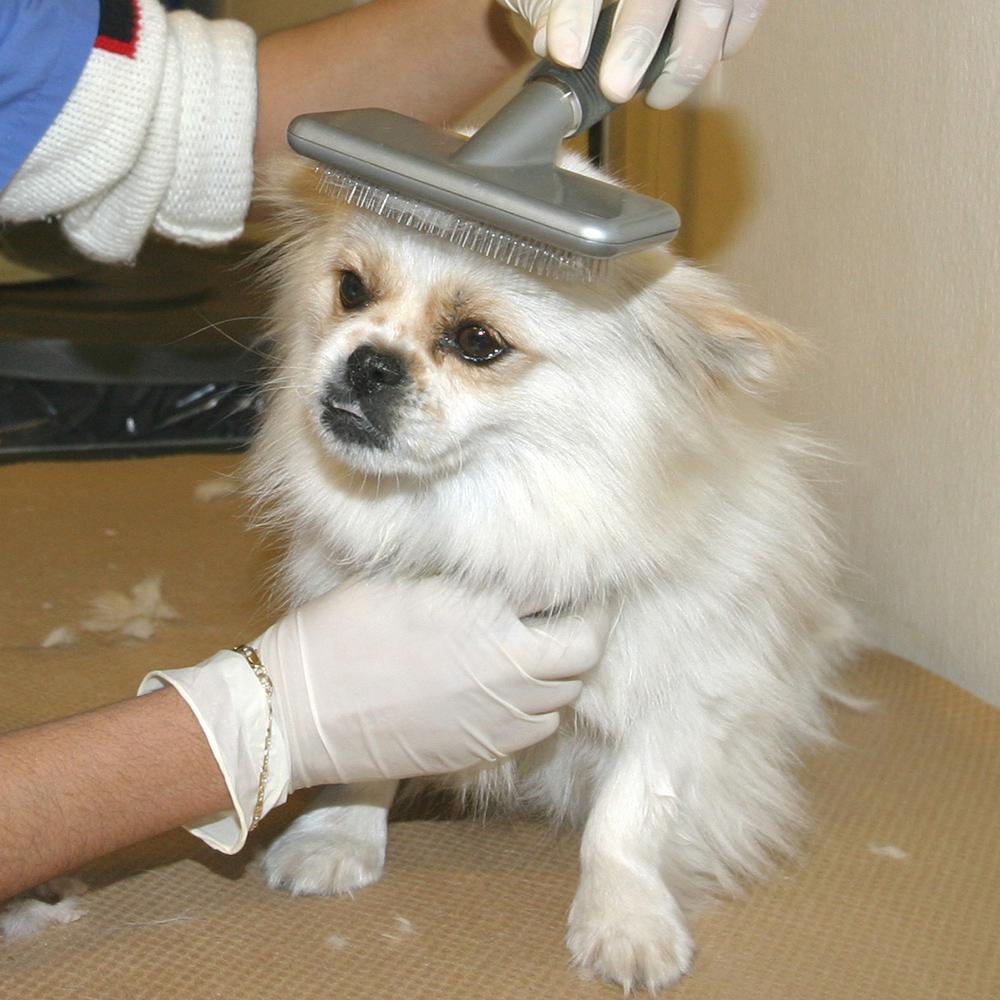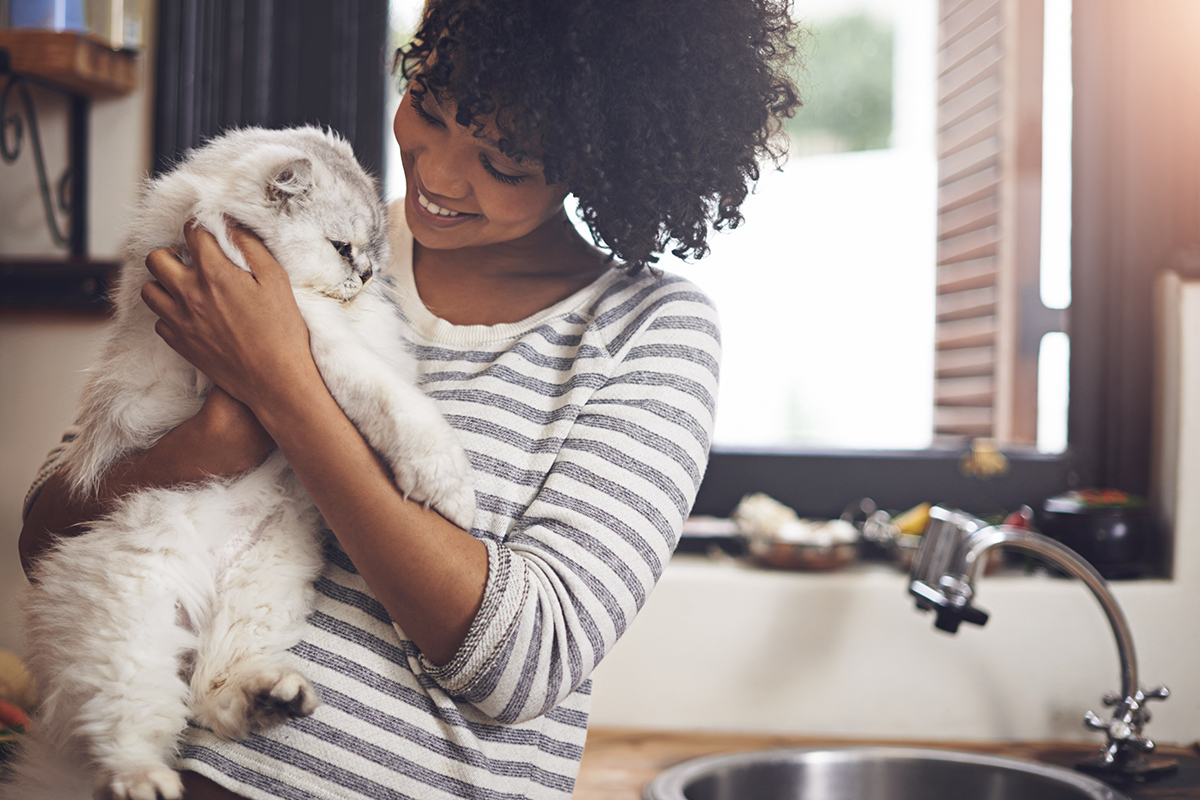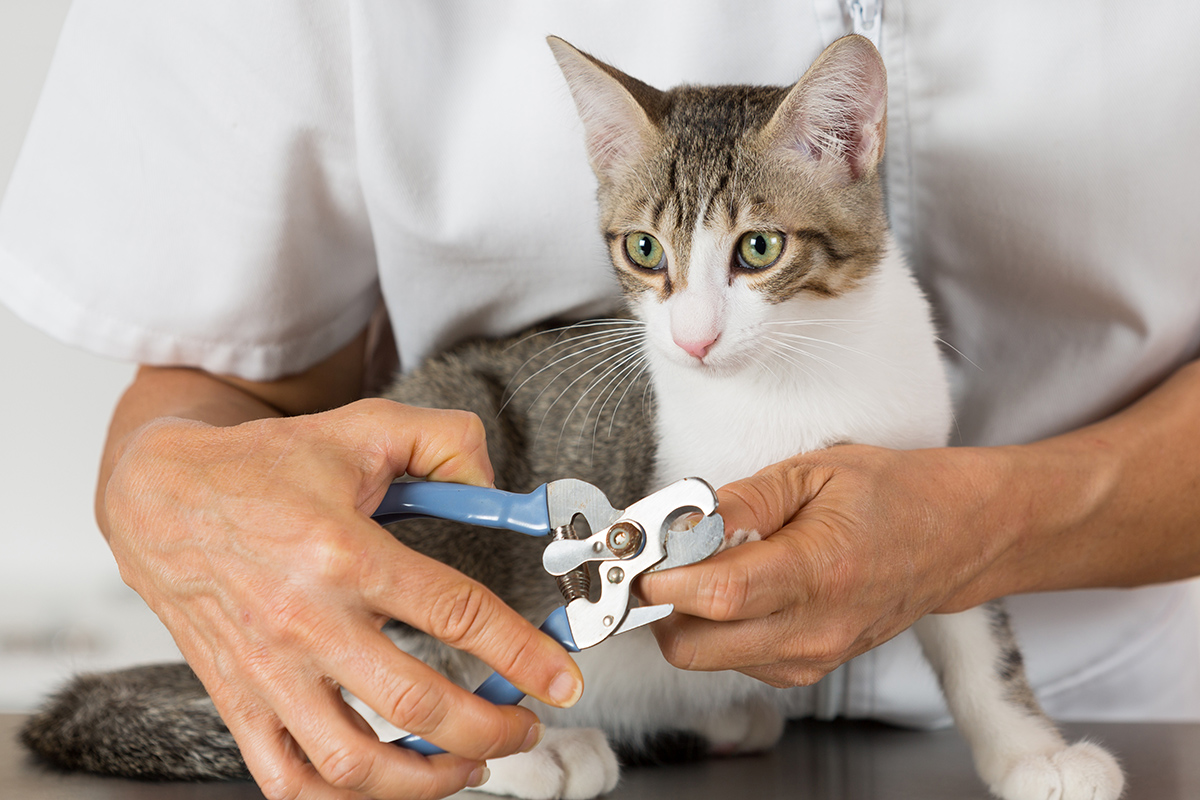These days when grooming salons may still not be open due to the COVID-19 crisis, our family pets may need our help to keep them smelling sweeter and not looking so overgrown. Here are some tips to help you keep your pets trimmed and clean.
DOGS
Brushing and Combing
The importance of brushing and combing can’t be stressed enough whether for dogs or long-haired cats. During these times when you can’t get to a groomer, you’ll need to brush curly coated dogs more to avoid mats forming. Long-haired dog breeds always need more regular brushing and combing than short-haired ones. This is especially true for breeds with double coats, like the Golden Retriever, Siberian Husky, and Bernese Mountain Dog.
For long-haired dog breeds, you should have a slick metal pin brush that will pull out dirt, grass, and burrs. For short-haired dogs, you can use a rubber curry or a brush instead. Then finish off your grooming session with a comb. You don’t want any tangles left if you are going to also bathe the dog because, once you wet a dog down, those tangles can turn to mats. For trimming after the bath, it is best to use pet clippers or professional shears over scissors—you could easily have an accident with those.

Bathing
Next, you can tackle the bath. Make sure to wear old clothes. There are several options as to what to bathe your dog in. “A laundry tub is a great choice. Bending over your bathtub is hard on your back and knees,” said Linda Easton, President of International Professional Groomers, Inc. “For larger dogs, try attaching a hose to a house faucet and running it out a door or window. Have some way to secure the dog’s leash or a helper to hold so you don’t have a wet/ drippy/ soapy dog running wild!”
Set up everything you will need ahead of time. The essentials are a mild dog shampoo or baby shampoo, two big absorbent towels, and, most importantly, some treats! You will also still need your brush and comb. Use the treats to reward calm behavior and to distract. Whatever size dog you have, if you don’t have a lot of experience, it would be a good idea to have an assistant.
It’s a good idea to put a non-skid mat in the tub. The water should be warm and don’t put it up so high that it is gushing out of the faucet. While wetting down the dog, be careful not to get water in the dog’s eyes or ears. Wet the dog, put some shampoo on the coat, rub it in, and rinse. You should be as quick as possible, but rinse thoroughly as any leftover shampoo can lead to hot spots.
Towel as much as possible in the room or outside while your dog is tethered. On a warm day, you might not have to blow dry, but you want to brush out the coat again as soon as it’s dry enough. Inside, you can use a blow dryer set to low in order speed up the drying process for long-haired dogs. Brush and comb out the dog’s coat again.

Trimming the Coat
When you trim the coat after the bath, focus on the fur on the hind end, the fur under the stomach, the feathers on the legs, and the fur on the top side of the paws. Don’t cut too much, just trim so the groomer has something to work with when your favorite dog salon opens up again.
Whatever instrument you choose to use to trim your dog, you must be very careful. “Scissors need to be made for dogs. If scissors are too dull, you work too hard to cut hair and are more likely to accidently cut the dog,” advised Linda. “ALWAYS hold the hair you want to cut between your fingers and be sure you can feel where the skin is, then cut above your fingers… this way there is no chance of cutting the dog.”
Linda also recommends buying clippers made for dogs as small clippers are not strong enough to move thorough dog hair. “Don’t use the blade that comes on the clipper to shave your dog… it is TOO short. Use an attachment to keep the blade off the dog’s body. Clipping dogs short reduces their defense system and can affect their immune responses,” stated Linda. “If you want to buy clippers, talk to your local groomer for sources or try a groomer supply website.”
Don’t try to cut your dog’s nails unless you have done it before. If you cut the quick that runs through each nail, the dog will bleed. You can try to use a nail file instead.
Cleaning the Ears
You want to periodically check the insides of your dog’s ears, especially if you have a dog with floppy ears like a Cocker Spaniel, to make sure that they don’t get infected. Signs of an infection that you should watch out for include a bad smell and if you see your pet is scratching repeatedly at his ears and shaking his head.
To clean the ears, you need an ear cleaner solution for dogs plus gauze pads or cotton balls. Never use Q-tips because if you push these in too far you can damage the ear drum. Put some cleaner on a pad and wipe the inside surface of the ear flap. Then pour cleaner into the ear and rub the base of the ear. Take a moistened pad and push it gently into the ear, as close as possible to the canal, and wipe. If you get lots of dirt on your pad, do it again. If that persists, your dog needs to see a veterinarians as he may have an ear infection and needs medication to clear it up.
CATS
Caring for Long-Haired Coats
Long-haired cats definitely need more grooming time and help caring for their coats. Find a quiet room to brush your cat and it can become a great bonding experience. Any mats or knots should be removed by regular brushing. It also keeps the skin healthy and discourages hair balls. First use a metal comb and then a rubber comb or mitt.

You want to avoid mats forming as they can cause skin irritation and infection. If there are mats, do not use scissors to remove them. It is very easy to cut the skin and cause pain. Use a wide-toothed comb to detangle knots or mats or for thicker mats you can try a brush with teeth or a mat comb. If the mat is too tough, you should have a groomer use clippers to remove it.
Claw Trimming
If an owner is comfortable, nail trimming can be done for a cat. However, if it hasn’t been done before, Dorit Shevach-Shani, Feline Enrichment Manager at North Shore Animal League America, strongly suggests that you first desensitize your cat to having his feet handled because you’ll need to touch his toes during clipping. You can do this a little at a time using some treats as rewards when your cat allows you to touch his feet. Also you need to desensitize the cat to the clippers themselves, Pairing the sight and presence of the clippers with treats will make sure the cat doesn’t fear the object itself.

When clipping the nails remember to only clip the tips. You need to be careful of the quick (the blood vessel inside). “Clip a few nails in one session, give a treat and celebrate. Don’t wait for the cat to become upset to stop the session,” advised Dorit. “Stop on a positive note and give a treat so the cat doesn’t associate negative things with the experience. Then try again later or another day. Keeping the interaction as stress free as possible is key.”
Having one person hold the cat while the other clips the nails can make it easier to accomplish this task. Use clippers with sharp blades for precise cutting and so you don’t crush the nails. The clippers should also be easy for you to handle and maneuver.


